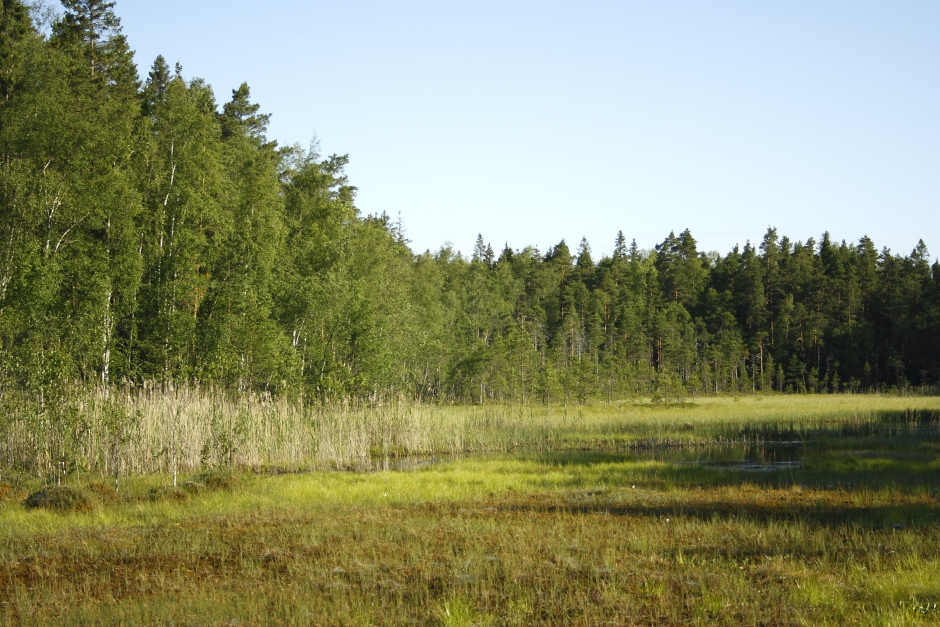Treeless mires

A mire is a type of wetland, often devoid of trees. Pine or various deciduous trees can occasionally be found but are usually small in size and stunted. Vegetation is instead dominated by lichen and various species of sedge, cranberry, bog-rosemary, and purple marshlock. Among bird species you find the wood sandpiper, picking insects from the ground.
Water levels vary from mire to mire and annual variations can be large. Mires form when water levels in swamps or pine mires increase to the point where trees die off or by a lake being overgrown by lichen. The land uplift phenomenon contributes, albeit slowly, to mire formation in former sea bays. Similarly to other types of wetland, treeless mires have in large part been diked in order to provide cultivable land or forest land. Diked mires can also be harvested for peat.
Treeless mires are relatively rare in Vaasa but can, however, be found in the Sundom archipelago as well as in Gerby, where the large, treeless mire named Holmslätorna is located. Mires are more easily navigated during autumn, as the water level is markedly lower than during spring.
